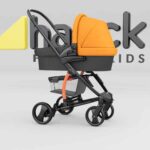When I shop for furniture online, I always stop and look twice at the photos. The sofa looks terrific on the screen, but will that shade of grey actually work in my living room? And those glossy catalogue shots never really show what the fabric feels like or how a dining table would look under normal daylight. That’s why so many brands now work with a 3D product visualization company and use 3D rendering for furniture catalogues. This approach allows them to present products more realistically, giving customers a much more accurate sense of colour, texture, and design than traditional photography ever could.

Colours appear slightly different under bright studio lights, fabrics don’t always show their proper texture, and it’s hard to picture how that sofa or dining table would actually look in your own living room. Capturing the real look and feel of furniture online isn’t easy. Colours shift on screens, fabrics lose their texture, and scale is hard to judge. That’s why more furniture and home décor brands are moving toward 3D rendering as a better solution.
Why Traditional Furniture Photography Can’t Compete With 3D Rendering for Catalogues
Don’t get me wrong, photography still has its place. But think about what goes into creating a furniture catalogue the old-fashioned way:
Renting a studio or location
Shipping heavy products to the site
Hiring a photographer, stylists, movers, and assistants
Repeating the entire process if you want new colours, finishes, or design tweaks

It’s expensive. It’s time-consuming. And in most cases, it’s not flexible. If a brand wants to show the same chair in ten different fabrics, that’s ten separate photo shoots. With 3D rendering? You create the model once and swap textures endlessly.
How 3D Rendering Creates Realistic Furniture Catalogues for E-Commerce
Here’s what makes 3D rendering a game-changer for furniture catalogues:
Endless variations: Change materials, fabrics, or colours in minutes.
Photorealistic quality: High-end rendering tools capture lighting, shadows, and textures so well that customers can’t tell the difference.
Consistency across catalogues: 3D rendering makes every product look like it belongs together, even when the designs come from different times.
Room settings on demand: Instead of staging entire rooms, you can place products in virtual environments that match the style you want to promote.

I’ve spoken with brand managers who said that switching to 3D rendering cut their catalogue production time in half. Some even reported savings of 30 to 40 per cent compared to traditional photography.
Top Benefits of 3D Rendering for Furniture and Home Décor Catalogues
Today’s shoppers want more than static images. They expect interactive experiences, including the ability to rotate, zoom, and visualize how a product looks in different finishes. E-commerce giants like IKEA have already demonstrated the power of this approach. Their catalogues increasingly rely on 3D visuals, and many customers never realize they aren’t looking at photographs.

Think about it. If a customer can see how a sofa looks in five fabric options instantly, they’re far more likely to make a purchase. That speed and confidence directly translate into sales.
3D Furniture Rendering for Displaying Various Finishes and Fabrics
Another overlooked benefit? Sustainability. Shipping bulky furniture to photoshoot locations isn’t just expensive — it’s carbon-heavy. With 3D rendering, brands avoid that logistical footprint. They can launch entire collections virtually before a single piece is manufactured, testing designs without wasting materials.
How 3D Furniture Rendering Enhances the Online Shopping Experience
I’ve heard smaller brands say they worry 3D rendering is only for the big players with massive budgets. That might have been true a few years ago, but not anymore. As more studios focus on product rendering, the costs have dropped, and the options have grown. Even small home décor businesses can now put together catalogues that feel just as polished as those from luxury design houses.

And here’s the kicker: early adopters stand out. While competitors are still scheduling photoshoots, you can have your full product line rendered, styled, and published weeks faster.
The Future of Furniture Catalogues: 3D Visualization and Virtual Showrooms
Furniture catalogues are more than just a marketing tool. They’re often the first impression a brand makes. In a world where customers demand speed, realism, and options, 3D rendering delivers all three. Whether you’re a large furniture retailer or a small home décor startup, it’s worth considering how this technology could reshape the way you present your products.
I’ve seen firsthand how sceptical clients become converts after their first project. Once they realize they can get the look of a high-end photoshoot without the logistical headaches, they rarely go back.
For furniture and décor companies, 3D rendering is no longer an optional choice. Furniture brands rely on 3D rendering to reshape customer shopping habits and to design catalogues more efficiently.
This article was developed with AI assistance and reviewed by Dhananjayan Nair for quality and accuracy.





